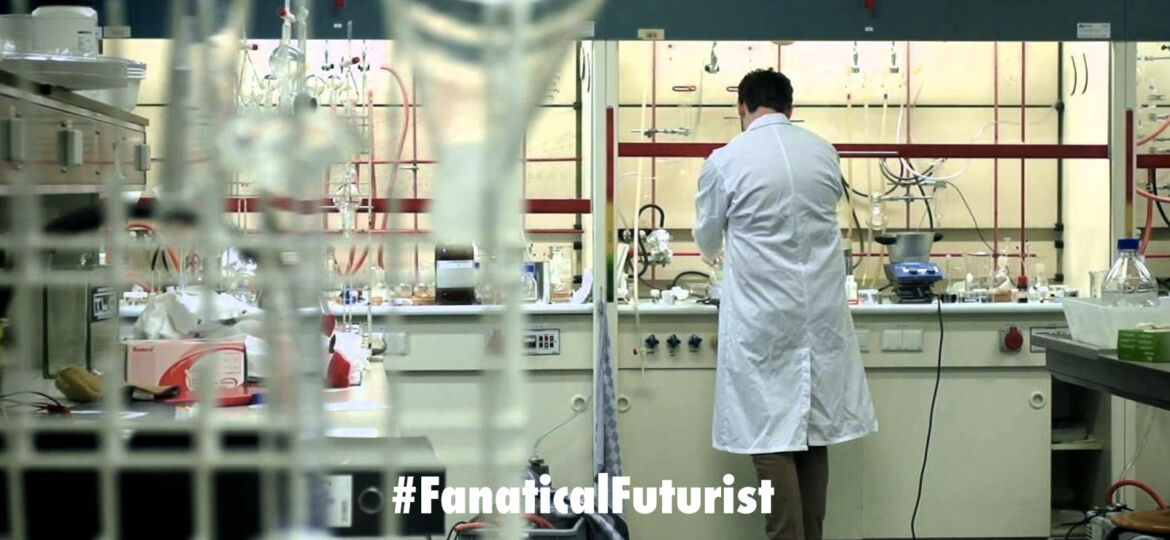
WHY THIS MATTERS IN BRIEF
Chemistry plays a vital role in our society and being able to create new drugs, and chemical cocktails and compounds, will revolutionise everything from cars to healthcare.
Chemists have a new lab assistant, and its name is Artificial Intelligence (AI), and they join synthetic biologists and materials scientists who also have new AI co-workers helping them design and do new things. This week researchers in Germany have developed a deep learning AI tool that produces “blueprints for the sequences of reactions needed to create small organic molecules,” such as drug compounds, and the chemical pathways the new AI creates look just as good on paper as those conjured up by human experts. In short, AI is learning chemistry, and it’s getting increasingly capable at figuring out the best reactive pathways to create results.
The AI, which is described in Nature, is not the first of its kind, IBM Watson was bestowed that honour earlier this year after it started to master how to predict the outcome of organic chemical reactions, but it’s the continuation of a new trend that sees AI’s playing a greater role in helping develop novel new drugs and chemical compounds. As a result chemists are hailing the newest development as another milestone, saying that it could speed up the process of drug discovery by “orders of multiples” and make organic chemistry “cheaper and more efficient.”
“What we have seen here is that artificial intelligence can capture this expert [chemists] knowledge and put it to good use,” said Pablo Carbonell, who helps design “synthesis predicting tools” at the University of Manchester, but was not involved in the work, before going on to describe the effort as “a landmark paper.”
Chemists conventionally scour lists of reactions recorded by other people, and draw on their own knowledge and experience to work out the step-by-step individual pathways needed to make a particular compound. They also usually work backwards, starting with the molecule they want to create and then analysing which readily available reagents and sequences of reactions could be used to synthesise it, a process known as retrosynthesis, which can take hours or even days of planning.
The new AI tool, developed by Marwin Segler, an organic chemist and AI researcher at the University of Münster, and his team, used deep learning neural networks to ingest all the known single step organic chemistry reactions, all 12.4 million of them, and this helped it predict the chemical reactions that it could use to create the new compounds. The tool repeatedly applies these neural networks in planning a multi-step synthesis, deconstructing the desired molecule until it ends up with the available starting reagents.
Segler and his team then tested the pathways that it threw up in a double blind trial to see whether experienced chemists could tell the difference between chemical pathways created by the AI and those created by human chemists. They showed the results to 45 organic chemists from two institutes in China and Germany and none of them could tell the difference, which was ostensibly a win for the AI.
Researchers have been trying to use computers to plan organic chemical reactions since the 1960s, with only limited success, but Segler’s tool is one of several programs developed in recent years that use AI to flag up potential reaction routes and automate it.
Chematica, for example, which is perhaps the most well known, was recently acquired by German pharmaceutical company Merck for an undisclosed sum, and elsewhere, asides from IBM’s efforts, Bartosz Grzybowski, a chemist at the Ulsan National Institute of Science and Technology in South Korea, and his team, spent years inputting the rules of organic chemistry into their own system for it to draw on. Earlier this month, Grzybowski reported that he’d tested eight of his algorithm’s suggested pathways in the laboratory, and that they’d all worked.
“I’m very glad there is this revival of retrosynthesis, and welcome different approaches,” he said.
Meanwhile Segler’s new AI tool is different because it learns from the data alone and doesn’t need humans to input rules for it to use, and Ola Engkvist, a computational chemist at pharmaceutical company AstraZeneca in Gothenburg, Sweden, is impressed by the work.
“Increasing the success rate in synthetic chemistry would have a huge benefit in terms of speed and efficiency on drug discovery projects, as well as cost reduction,” he said.
Segler says his tool has already piqued the interest of several pharmaceutical companies, but he doesn’t see it putting organic chemists out of work just yet.
“It will be an assistant for the chemist who wants to make molecules and get from A to B as quickly as possible,” he says, before going on to use an analogy. “The GPS navigation device may render paper maps redundant – but not the driver of the car.”
And while that might be true, as we’re witnessing today with the emergence of self-driving cars, it didn’t take too long before the computer cousins of those first basic sat nav’s learnt how to drive the car themselves…
















